Buyer personas are one of the staples of the marketing world — and for good reason. Imagining your buyer in real terms allows businesses to empathize with them, understanding their problems, motivations and needs.
SaaS businesses, especially those operating in a product-led growth model, have very specific buyer journeys and behaviors, plus a wealth of data that, when used correctly, can inform every step of our fictitious buyer’s journey.
Whether you can’t remember the last time you touched those buyer persona slides you created eons ago, your existing personas are falling flat, or you’re a SaaS startup creating buyer personas for the very first time, this guide will help you build buyer personas that create a more meaningful brand experience and increase your MRR.
What are SaaS buyer personas?
Buyer personas bring your audience segments to life. Think of them like your company’s imaginary friends — they are thinking, feeling characters that we picture when we’re writing marketing messages, mapping the customer journey, or deciding on a product update roadmap.
The best buyer personas make complex, rich data — from demographic, behavioral, and firmographic customer data, to customer surveys and market research — simple and tangible to anyone in your organization.
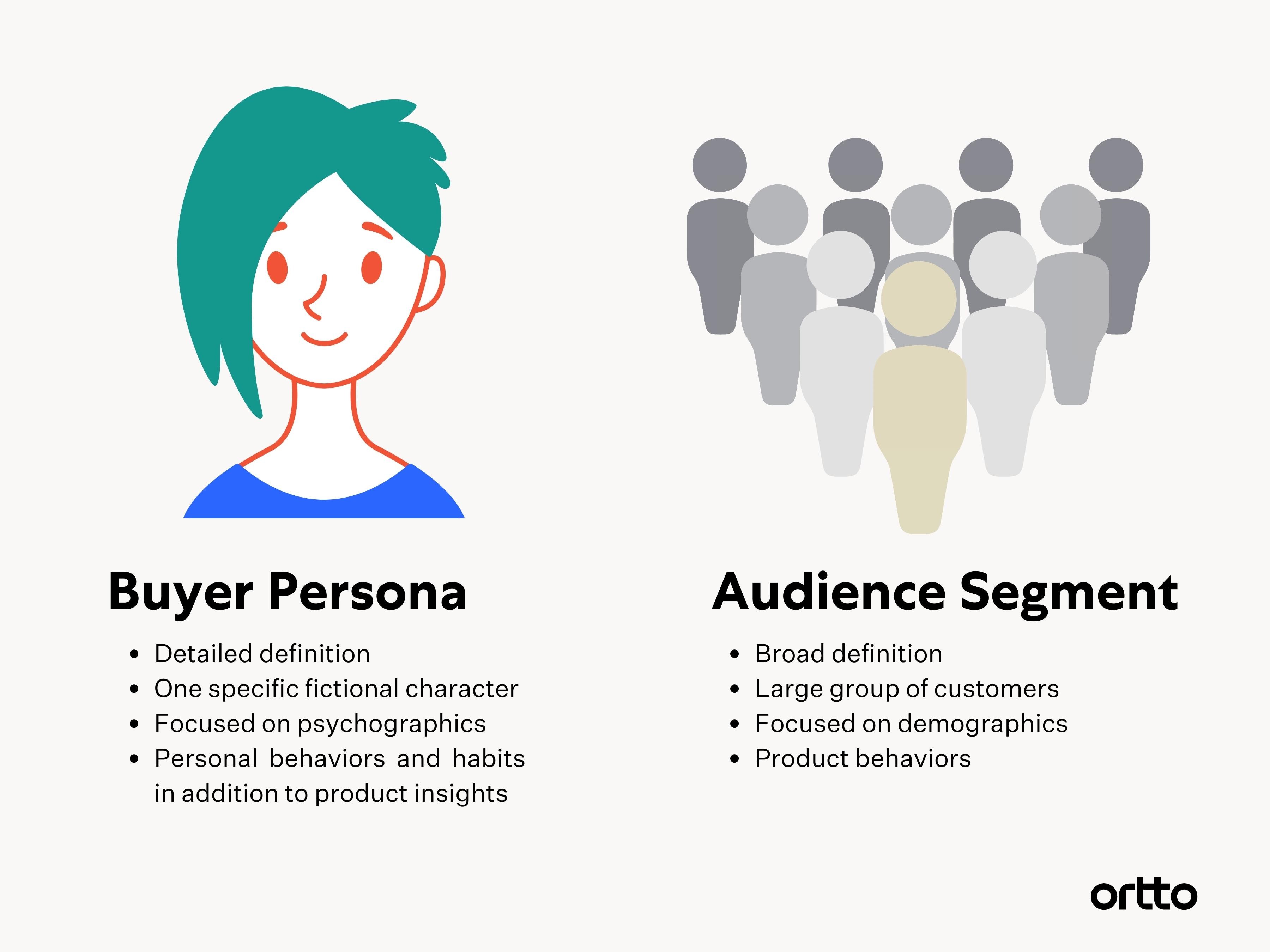
Once we can really walk in the shoes of our buyers, we can create product experiences that shorten the journey from browse to buy and ensure buyers have the kind of experience they tell their influential friends about.
How are buyer personas different for SaaS companies?
It has been widely reported that we are well into the end-user era.
From 2000 to 2015, software companies were selling to the c-suite. Then Slack, Zoom, and a whole host of other SaaS companies entered the chat and the end-user started making the decision to adopt a new tool — or petitioning leaders in the organization to adopt a new tool they love to use.
It’s pretty easy to connect the dots here. Buyer personas in SaaS companies are not so straightforward anymore.
Consider project management tools like Trello and Asana. A VP or C-suite executive may be the one signing the check on the enterprise-level plan, but it’s just as likely that it was someone down the chain who initially recommended one tool over another. Both individuals are part of the decision-making process — one as an influencer and one as a buyer, and the best SaaS marketing strategies will take both personas into account.
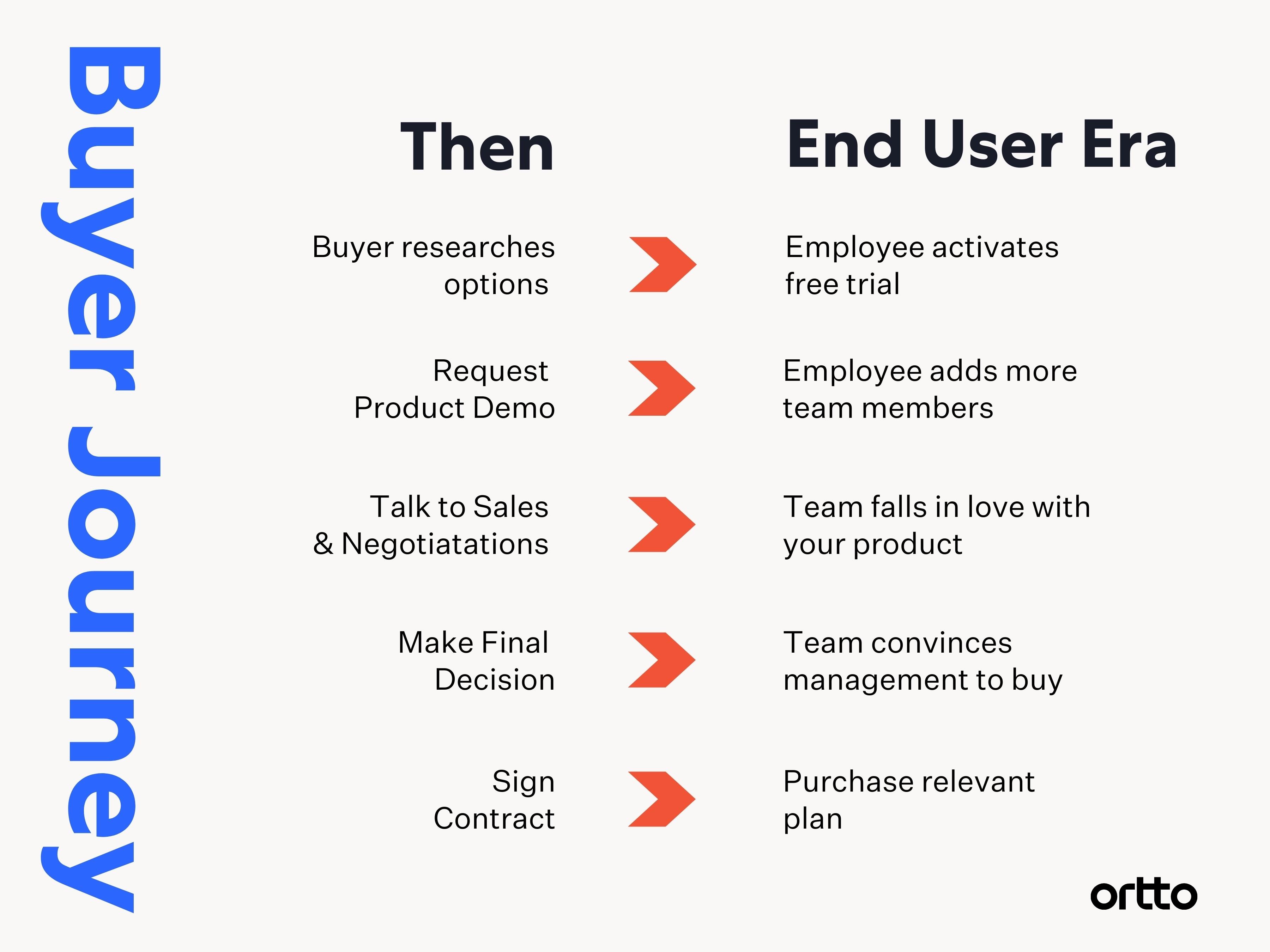
How to create better SaaS buyer personas
Just as there’s no one-size-fits-all buyer persona, there’s really no perfect process for identifying them. These five steps should be considered guidelines, and we’d encourage you to keep an open mind and remain agile as you work through them.
Step one: Conduct research
It’s worth conducting interviews with existing customers and your professional network to find out how and why your product could land in your buyer’s hands.
In some cases, existing customer interviews may have already been conducted when creating case studies or other SaaS marketing materials, and you can simply refer back to your original transcripts to get the information you need.
When conducting these interviews keep in mind what you already know: who they are, their role in their company, and - for customers - how they’re using your product. What you want to get out of this call is a lot more specific. For example:
Which other tools and technologies do you use that are essential to your business?
Which of our competitors did you research or use before making the decision to adopt our product?
How many people in your organization used the product during your free trial, and what was their role in the decision-making process?
What was the one problem you were hoping our product would solve for you and your organization?
When researching options, were there any non-starters for you?
During your free trial, how long did it take for you to have your aha moment?
Step two: Unify and organize your data
If your data is siloed, you’ll never have a good understanding of the journey your customer has taken, meaning your buyer persona will run the risk of missing crucial platforms, actions, or behaviors.
After all, many buyers will see an ad on Facebook, head to your website, bounce off, rediscover you through search, and spot your logo on the integrations page of one of your partners before they’ve even handed over their email address.
Use a platform like Ortto to unify your data and get a singular customer view to start piecing their journey together.
Step three: Enrich data and segment your audience
With your data unified, you can use enrichment to append company and other contact details to your customer data. A platform like Clearbit will use millions of data points to automatically refresh your customer records as soon as a change is detected. This will ensure that the data you’re working with is reflective of the current situation.
If you’re working with out-of-date records, you could miss important details about your buyers like customer seniority, industry information, employee count, location, and revenue.
Now that you have enriched your data, you’ll be able to identify sophisticated audience segments that can inform your buyer personas. At Ortto we’re committed to not just unifying data, but ensuring that anyone in an organization, regardless of their data analysis skills, can read and segment data with ease.
With the click of a button, you can filter by just about any variable. For example, MRR, organization type, number of users in an organization, and — crucially — any actions taken including emails opened, forms submitted, and any other on-platform actions are important to your business.
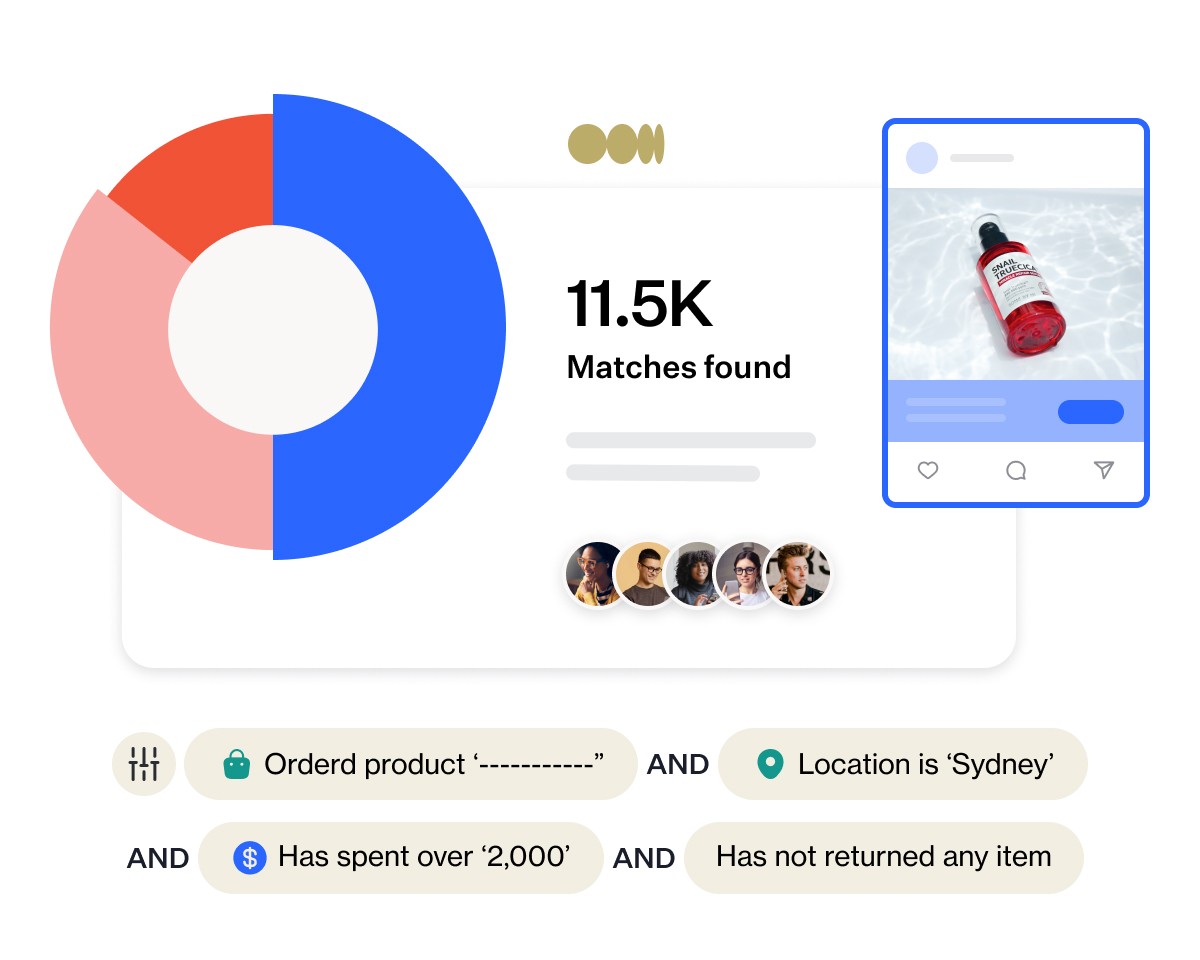
All of this will help you start to paint a picture of your buyers and the journey they go on to find your product.
Step four: Identify buyers and influencers
In the segmentation process, you may have already discovered that there are three segments within your segments:
Buyers who make decisions on behalf of users (e.g. a senior member of an IT team)
Influencers (e.g. employees who influence decision making)
Users who are buyers (e.g. a one-person finance team)
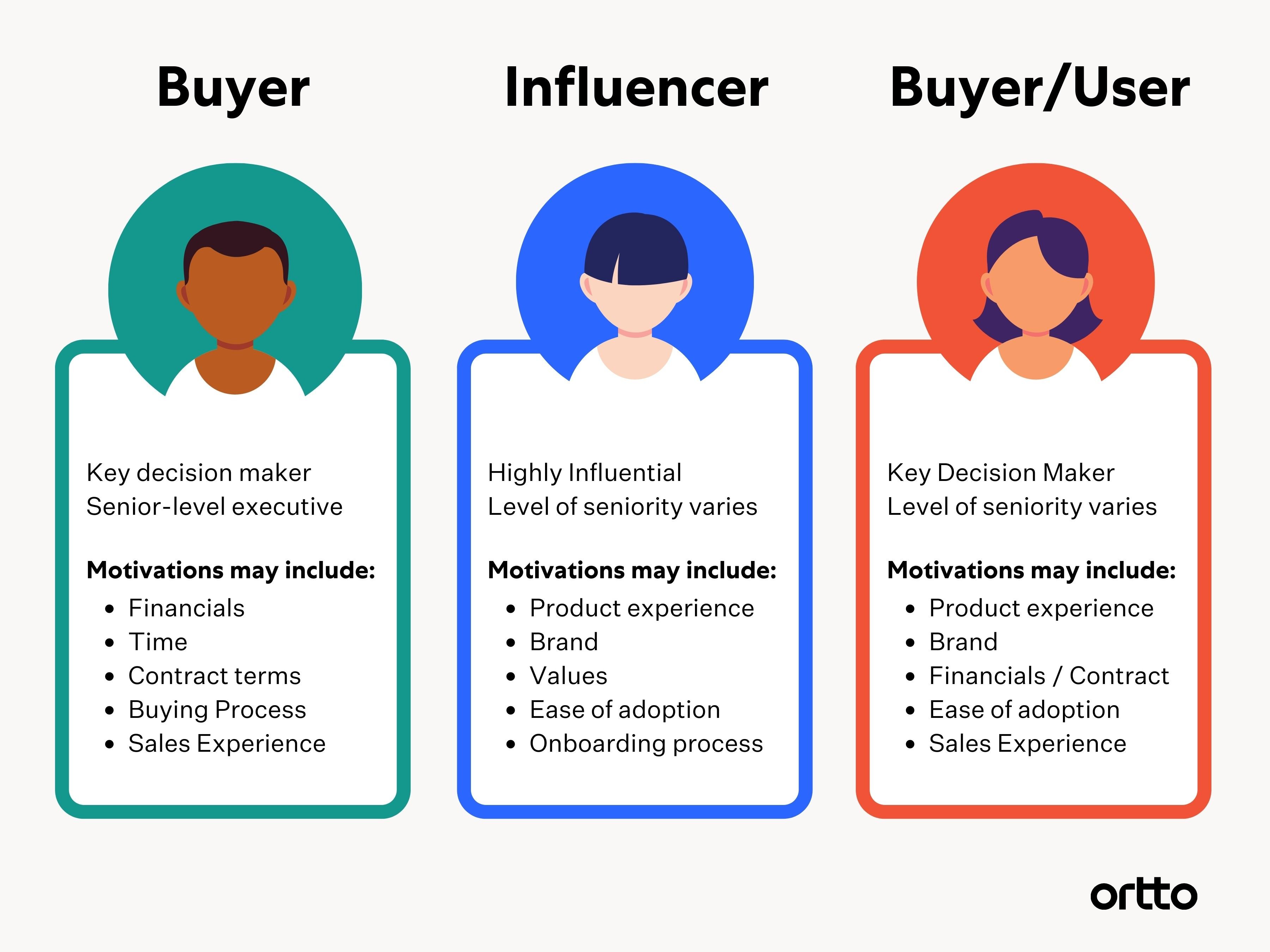
It can be helpful to start to separate these out into sub-segments so that you can begin to identify things like job titles, motivating factors in their decision-making process, most commonly used integrations or features, and more.
Step five: Bring your personas to life
By now you have a good sense of who these people are and how they behave, so it’s time to bring them to life. Start to tell a story around these people — why might they be looking for a product like yours? What problems are they trying to solve? Which tools and platforms are they already using? What motivates them most?
There’s a fine line between being specific and exclusive. Try to think about your buyer persona more in terms of psychographics than demographics. At the end of the day, their behaviors, habits, motivations, and values are more important to you than their age, gender, or ethnicity. It’s common to name and visualize your buyer personas, and that can still be done – aim for genderless names and language and use illustrations rather than photographs.
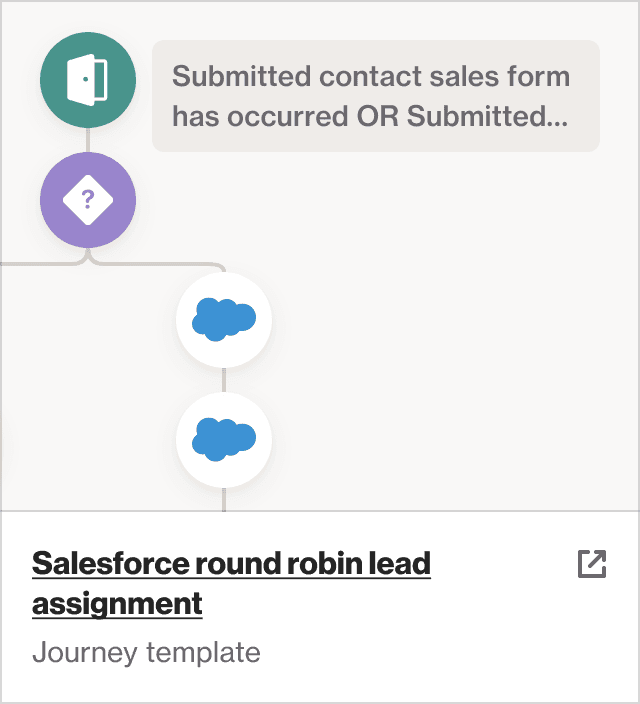
Three reasons your existing SaaS buyer personas aren’t working
You’ve got a set of buyer personas that you painstakingly created. But you’re a year into things and you’re just not seeing the results you expected.
First off, this is incredibly common. SaaS businesses are complex, often offering multiple products or services to the end-user and dealing with an array of stakeholders across the customer’s company.
So instead of mulling in disappointment, see this as an opportunity to learn even more about your product buyers and users. Start by considering these common reasons SaaS buyer personas fail:
1. They don’t include technographic information.
Integrations and APIs are key to SaaS businesses growth. They’re an awareness tool, retention tool, and a part of future-proofing your business. Without technographic information, your persona will lack crucial information about the tools and technologies your potential customers consider essential to their business. Enriching your data using a platform like Clearbit can help ensure this data is complete and
2. They’re static.
The world changes. Fast. The SaaS world? Even faster. (Don't believe us? Just check out the SaaS trends for 2022). Consider this: If your buyer personas were built in February of 2020, just two years ago, they were built before a global pandemic prompted us to pack up our desks and start working from home. Then consider all the new technologies and tools your business is using, how you may have restructured your team to serve a PLG model or any major changes to your product. A lot has happened. And the same applies to the characters you've built to represent your buyers.
3. They exist in a silo.
If your buyer personas have only been adopted by the marketing team, it’s unlikely they’ll be working as hard as they could.
Many SaaS businesses are operating in a product-led growth model or a hybrid of product-led and sales-led. This means that many customers’ first experiences of the brand will be within a free trial of the product, and they will need product experience to match up with everything you’ve learned when developing your buyer persona.
Let’s take the example above — you have technographic information that says your buyer is most likely to use Shopify in their workflow. But, during the self-led onboarding experience, there’s no prompt for them to connect Shopify. They’re busy, they neglect to scroll through every integration you’ve got, and they’ve never taken a crucial step that could unlock their ‘aha moment.’
Make your personas part of your everyday life at work by bringing them into conversations regularly. Think of ways to infuse these personas into your culture so that the buyer — who is often also the end-user — is at the center of every decision.
The final word
Buyer personas in SaaS businesses are complex, but that complexity brings a wealth of information that ultimately leads to a more interesting and useful persona that can be rolled out to product teams, designers, content creators, and more.



